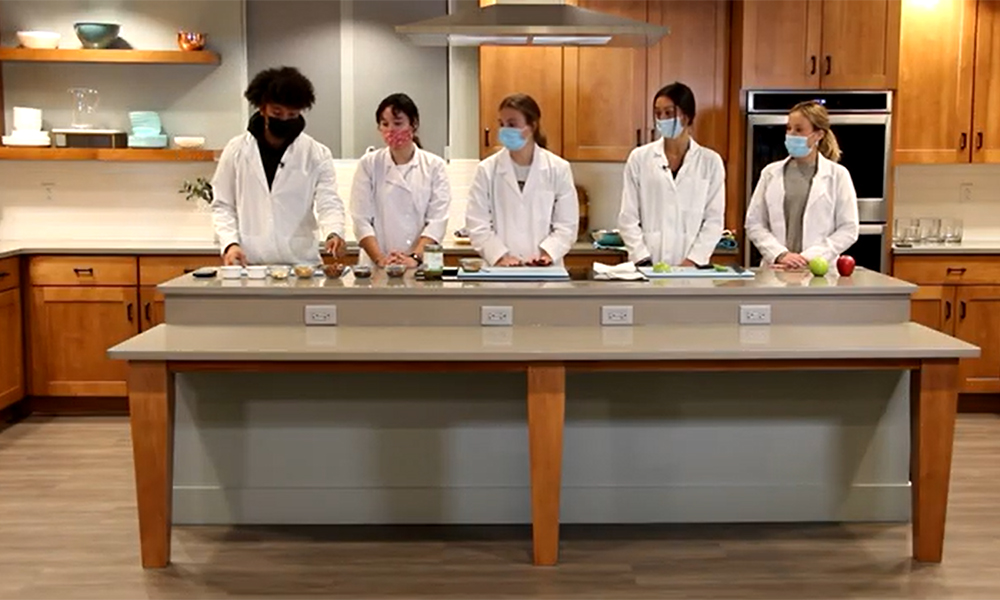Dietetics students bring cooking lessons to local children
College of Health and Behavioral Studies
SUMMARY: JMU dietetics students collaborate with the Explore More Discovery Museum, WHSV, and Martin's to share healthy cooking demos with the community. Check out the recipes at the bottom of the article!
Dietetics professors Michelle Hesse and Jennifer Walsh and students from their junior and senior level nutrition classes have been partnering with the Explore More Discovery Museum to educate children about nutrition.
The idea for this collaboration started in Hesse’s X-labs classes where a group of students created a prototype of a cooking video that was aimed at elementary and middle school aged children. The goal of this video was to create solutions that support food security and to teach children how to make nutritious meals with simple ingredients.
“This is a lower stakes way for students to practice how they’re going to be performing as a professional in the future,” Dr. Michelle Hesse said. “I love doing these more hands-on collaborations because they allow students to get practice and hone their skills in a way that’s more structured.” The project has been further refined by dietetics students enrolled in the in the Community Nutrition and Scientific Preparation classes, where they created a nutrition education curriculum which included cooking videos. Because the main audience of these videos are children, Hesse said the Explore More Discovery Museum was the perfect place for her students to test out the skills they have learned in a little-to-no-pressure environment.
Along with the children’s museum, the project has also received help from WHSV and Martin's, with WHSV assisting in filming and editing the videos and Martin's providing the ingredients. Hesse said this collaboration allows students to get more in touch with the local community.
“A lot of times students live in this JMU bubble,” Hesse said. Collaborating with the community allows them to see the needs of the area around them. They’re part of the Harrisonburg community and it’s important for them to understand how to elevate their knowledge and skills to support the needs of the community.”
Hesse said this opportunity is allowing students to learn more about nutrition as well as getting real life experience that will help them in their future careers. Hesse’s students are in charge of designing the food demonstrations and students in the community nutrition class are responsible for the nutrition education lessons. She said both of these aspects of the collaboration with the children’s museum allow her students to see the different ways that nutrition can be taught.
“I think [this partnership] enforces that there is not a one size fits all approach to nutrition,” Hesse said. “As dietitians, we’ve got to get creative and we have to have the ability to be adaptable and flexible when we’re working with different populations.”
While being flexible when working with different populations is important, junior Dietetics major Kaitlyn Good said she’s learned that being culturally sensitive is important as well.
Good said through working with the children's museum, she has learned to incorporate different cultures into her nutrition lessons. One example she gave was about using white rice. She said it’s known that brown rice is more nutritious, but many cultures exclusively eat white rice and that can’t be ignored. Because of this, white rice has to be incorporated into that culture’s diet and, with the addition of other healthy foods, can be part of a nutritious diet plan.
Along with teaching children to be culturally sensitive, Good said she hopes the lessons she and her classmates give about nutrition really stick with the kids after they leave the children’s museum.
“I always think that you lead by example,” Good said. “I feel like it means everything to [the kids] that we come in and give them our attention and time. We as students are the role models; we give the children information and show them hands-on how to do things and I think that really helps them take in what they’re learning more.”
